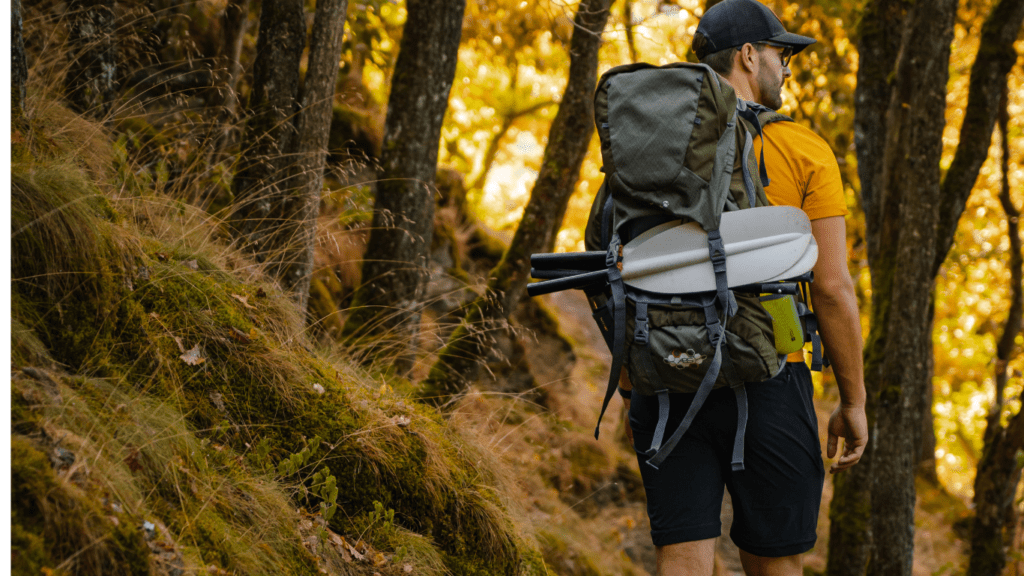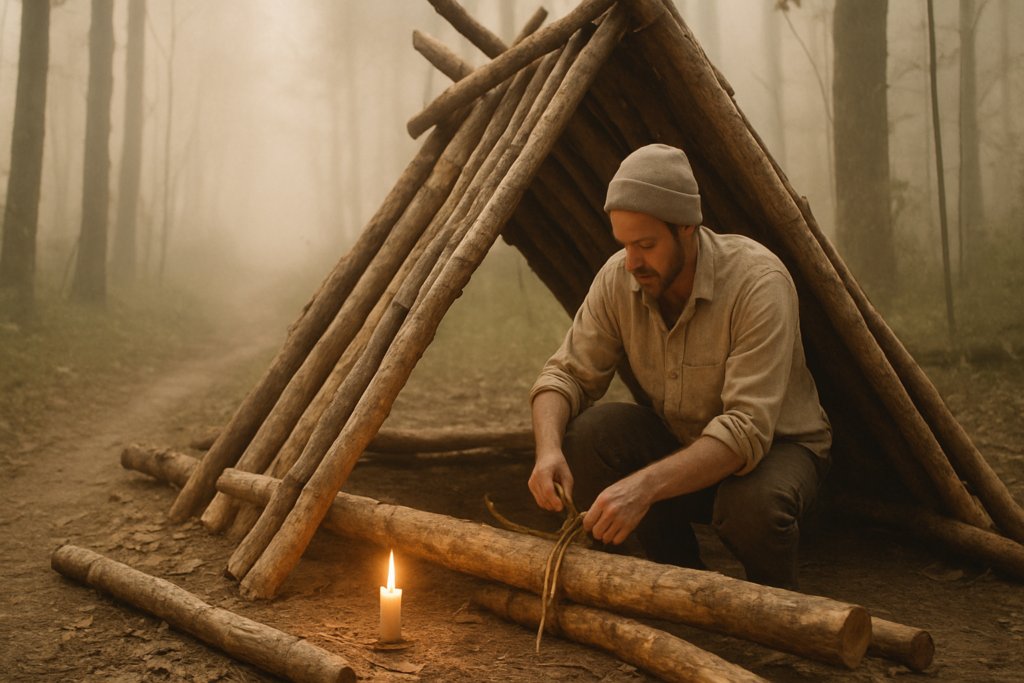Prioritizing Safety
Safety is the cornerstone of forest survival. A small lapse can lead to significant risks. Let’s dive into crucial safety strategies.
Understanding Your Environment
Knowing the forest’s terrain and wildlife increases your chances of survival. Research common plants, animals, and weather patterns of the area. For example, learning which plants are poisonous helps you avoid dangerous situations. Regularly check the weather updates and understand how weather changes can impact your journey.
First Aid Basics
First aid knowledge is critical. Carry a well-stocked first aid kit, including items like bandages, antiseptics, and tweezers. Learn how to treat common injuries such as cuts, burns, and insect bites. Enroll in a basic first aid course. In emergencies, prompt and correct first aid response can save lives.
Essential Tools and Gear
Having the right tools and gear significantly boosts your survival chances in the forest. Proper equipment helps tackle various challenges and makes survival tasks more manageable.
Choosing the Right Knife
A reliable knife is indispensable in forest survival. Opt for a full-tang knife for durability and strength. Ensure the blade is stainless steel to resist rust, and consider a fixed blade over a folding one for greater reliability. The blade should be sharp enough for cutting wood, but not too large, making it versatile for multiple tasks. For instance, a 4 to 6-inch blade is a practical choice for most situations. Also, think about the handle—rubber or textured handles provide a firm grip even when wet.
Proper Clothing and Footwear
Select clothing that protects against both the elements and potential hazards like insects. Layering is key: use moisture-wicking base layers, insulating mid-layers, and waterproof outer layers. Choose light colors to spot ticks easily. For footwear, hiking boots with good ankle support and non-slip soles are essential. Ensure they’re waterproof and provide adequate cushioning for long treks. Wool or synthetic socks wick moisture and prevent blisters. Remember, staying dry and comfortable can prevent hypothermia and other health issues.
Finding and Purifying Water
Water is crucial for survival in the forest. Knowing how to locate and purify water ensures both hydration and health.
Natural Water Sources
Discovering natural water sources involves understanding the terrain. I often find water in low-lying areas, such as valleys and depressions, since water typically flows downhill. Streams, rivers, and lakes are prime spots. When these are sparse, I look for indicators like green foliage, animal tracks, and insect activity, which often signal nearby water. Never drink directly from any source without purification due to potential contaminants.
Water Purification Methods
Purifying water is essential to avoid illnesses. I use various methods to achieve safe drinking water. Boiling is the most effective; water must be boiled for at least one minute. When boiling isn’t an option, I carry water purification tablets containing iodine or chlorine. They effectively kill most pathogens within 30 minutes. For a portable solution, I recommend using a filter pump. These devices remove bacteria and protozoa, although some won’t filter viruses. Finally, I sometimes use UV light purifiers; these devices neutralize microorganisms but require batteries. Having multiple methods ensures I always have access to safe drinking water.
Building Shelter
Building a shelter is a vital survival skill that provides protection from the elements and helps maintain body temperature. This section covers the types of temporary shelters and how to insulate them effectively.
Types of Temporary Shelters
Knowing different types of temporary shelters can be lifesaving. Here are a few essential ones:
- Lean-to Shelter: This requires a sturdy base like a fallen tree or large branch. Lean smaller branches or sticks against the base to create a roof.
- A-Frame Shelter: Use two branches to form a ridge pole, then lean other branches against the pole on both sides to create an A-shaped structure.
- Tarp Shelter: Secure a tarp to trees or poles using rope or paracord. This is quick and effective if you have a tarp on hand.
- Debris Hut: Pile leaves, grass, and branches to form a mound over a framework of sticks. This insulates well but takes time to construct.
Insulating Your Shelter
Insulating your shelter keeps you warm and comfortable, especially in cold conditions. Here’s how to do it:
- Ground Insulation: Place pine boughs, leaves, or dry grass on the ground to act as a sleeping pad. This reduces heat loss to the cold ground.
- Roof Insulation: Add layers of debris like leaves and branches on top of your shelter’s roof. This creates a thermal barrier against wind and rain.
- Windproofing: Use branches or rocks to secure the shelter’s sides, minimizing wind entry. Position the entrance away from the wind direction.
- Clothing and Gear: Use extra clothing or gear to plug gaps in the shelter, enhancing insulation. Ensure your sleeping bag or blanket stays dry.
Starting a Fire

Starting a fire is a critical skill in forest survival. A fire provides warmth, cooks food, and can signal for help.
Fire Starting Techniques
Several techniques can start a fire in the forest.
- Using a Lighter or Matches: Modern lighters or waterproof matches offer the easiest method. They ignite quickly, provided the tinder is dry.
- Fire Steel and Striker: A fire steel generates sparks when struck against a metal striker. Use it with dry tinder such as cotton balls or dried leaves.
- Magnifying Glass: On sunny days, a magnifying glass can focus sunlight onto tinder. Ensure the focal point is small and intense for ignition.
- Battery and Steel Wool: Connect a 9-volt battery to steel wool. The electric current heats the steel, igniting the tinder.
Fire Safety Precautions
Practicing safety around fires is essential.
- Clearing the Fire Area: Remove leaves, twigs, and other flammable materials from the fire area. This prevents accidental spread.
- Building a Fire Ring: Use rocks to create a barrier around the fire. This maintains control and reduces the spread risk.
- Keeping Water Nearby: Always have a water source or sand for emergencies. This allows for quick action if the fire gets out of control.
- Never Leaving a Fire Unattended: Always monitor the fire until it’s fully extinguished. Unattended fires can reignite and spread rapidly.
- Extinguishing Properly: Douse the fire thoroughly with water, then stir the ashes to ensure all embers are out. Feel the area to confirm it’s cool.
Adhering to these precautions and techniques ensures safety and effectiveness when starting a fire in the forest.
Navigating the Wilderness
Understanding navigation is essential for any wilderness adventure. It not only keeps you on track but also ensures your safety while exploring the forest.
Using a Compass and Map
A compass and map are fundamental tools for forest navigation. Begin by familiarizing yourself with the map’s symbols and scale. Use a topographic map to understand the terrain. Hold the map flat and align the compass with the North-South lines. Rotate the map until the magnetic needle aligns with the map’s north. Identify your current location by finding recognizable landmarks. Use the compass to determine your direction of travel, keeping the needle aligned as you move. Check your map frequently to ensure you stay on course.
Natural Navigation Techniques
Natural navigation techniques offer reliable alternatives if you don’t have a compass or map. Observe the sun’s position: it rises in the east and sets in the west. During the day, the sun is in the southern part of the sky in the northern hemisphere. At night, locate the North Star (Polaris) to find the north. It aligns with the last two stars of the Big Dipper constellation. Observe the vegetation: moss often grows on the north side of trees in the northern hemisphere. These natural cues can guide your path through the wilderness.
Finding Food
Finding food in the forest is essential for survival. Beginners must know how to identify safe sources of sustenance and understand basic hunting and foraging techniques.
Edible Plants and Berries
Identifying edible plants and berries is crucial. Experienced foragers avoid unknown species, focusing instead on well-known, safe options. Common edible plants include dandelions, clover, and cattails. Edible berries include raspberries, blackberries, and blueberries. Use field guides or apps to verify identification. Avoid plants with white or yellow berries; they are often toxic. Inspect leaves and roots for additional confirmation.
Trapping and Fishing Basics
Trapping and fishing provide essential protein. Basic traps include snares, deadfalls, and fish traps. Snares capture small animals and use a noose to trap the animal’s limb. Deadfalls employ a weight to trap an animal when triggered. Fishing can use hooks, lines, and nets. Find fish in calm waters, observing their movements before setting traps. Patience is vital in these techniques. Always check local regulations and practice humane methods.
Signaling for Help
Effective signaling can be a lifesaver in forest survival. Knowing how to attract attention is crucial when stranded.
Visual and Audio Signals
Visual signals, such as SOS signs made with rocks or logs, are effective for attracting attention from a distance. Use bright-colored items, like clothing or emergency blankets, to enhance visibility. In open areas, create large symbols or messages.
Audio signals, like a whistle or shouting, help alert rescuers nearby. A whistle with a loud tone is more effective than shouting, conserving energy. Follow the rule of threes: blow three short blasts, pause, and repeat.
Making Yourself Visible
Visibility increases rescue odds. Wear bright clothing and use reflective gear, and if possible, create a contrast with your surroundings. At night, use a flashlight or headlamp to signal rescuers. Fires also attract attention; use them safely as beacons.
Mental Preparedness
Mental readiness is crucial for forest survival. It helps manage unforeseen challenges and maintain clarity in critical situations.
Managing Stress
In high-stress situations, staying calm preserves energy and clears the mind for decision-making. Breathing exercises help lower anxiety and restore focus. For example, inhaling deeply for four seconds, holding for four, and exhaling for four aids in stabilizing emotions. Visualization techniques also assist with mental fortitude. Picturing a serene environment or recalling positive experiences can divert negative thoughts. Physical activity reduces stress hormones. Simple exercises like brisk walking or stretching elevate mood and enhance resilience.
Staying Positive
Maintaining a positive mindset is essential for morale and perseverance. Affirmative self-talk combats feelings of despair. Repeating phrases like “I am capable” or “I’ll find a solution” builds confidence. Setting small, achievable goals boosts motivation and provides a sense of accomplishment. Celebrating minor victories, such as successfully starting a fire or finding a water source, reinforces a can-do attitude. Staying connected to the purpose of the journey and visualizing the end goal fosters hope and determination, which are key to overcoming adversity.
Practicing Skills Regularly
Consistent practice is essential for mastering forest survival skills. As a beginner, dedicating time to practice ensures preparedness and boosts confidence in real-life scenarios.
Continuous Learning
Active engagement in learning resources enhances my understanding of survival skills. Reading books on wilderness survival, watching instructional videos, and attending workshops provide crucial information. For example, books by authors like Larry Dean Olsen or instructional videos on YouTube by survival experts give detailed insights into various techniques. Also, seeking knowledge from local wilderness education centers or forest ranger talks keeps the information fresh and applicable to my specific environment.
Hands-On Practice
Applying theoretical knowledge in real-life settings solidifies my skills. Regularly practicing tasks like fire-starting and shelter building in safe, controlled environments is vital. For instance, I might build a lean-to shelter or start a fire using a fire steel in my backyard or a nearby park. These practical exercises help me understand the nuances and challenges of each skill, making me more adaptable and resilient when I’m in the forest. Ensuring I practice identifying edible plants, using a compass, and purifying water enhances my ability to rely on these skills under pressure.



 Lead Forest Survival Specialist & Outdoor Educator
Timothy Peters is Whisper Forest Ways’ resident expert on wilderness survival and all things related to thriving in the outdoors. With a background in environmental sciences and over a decade of hands-on survival training, Timothy combines scientific knowledge with practical experience to teach readers essential survival skills, such as shelter building, fire making, and foraging. His approach emphasizes respect for the natural world and sustainability, ensuring that all of his methods encourage low-impact interaction with the environment. Whether you’re new to outdoor adventures or a seasoned explorer, Timothy’s detailed guides and insights provide invaluable knowledge for safely and confidently navigating the wild.
Lead Forest Survival Specialist & Outdoor Educator
Timothy Peters is Whisper Forest Ways’ resident expert on wilderness survival and all things related to thriving in the outdoors. With a background in environmental sciences and over a decade of hands-on survival training, Timothy combines scientific knowledge with practical experience to teach readers essential survival skills, such as shelter building, fire making, and foraging. His approach emphasizes respect for the natural world and sustainability, ensuring that all of his methods encourage low-impact interaction with the environment. Whether you’re new to outdoor adventures or a seasoned explorer, Timothy’s detailed guides and insights provide invaluable knowledge for safely and confidently navigating the wild.
